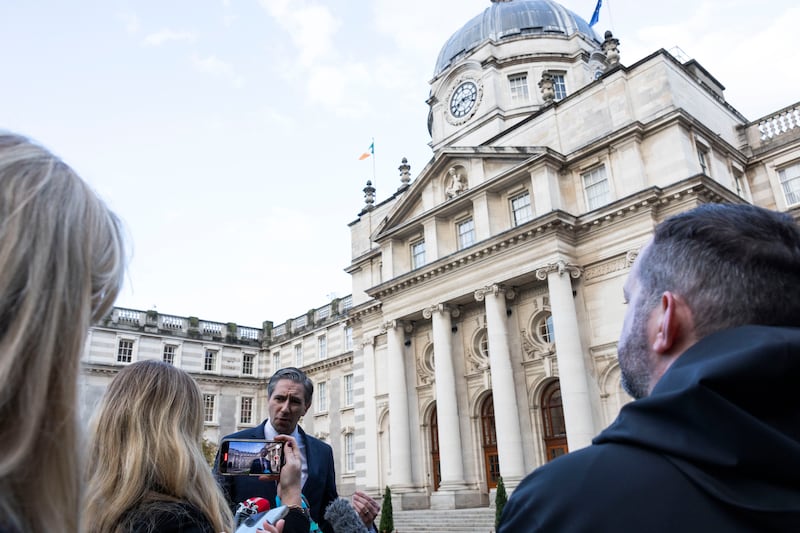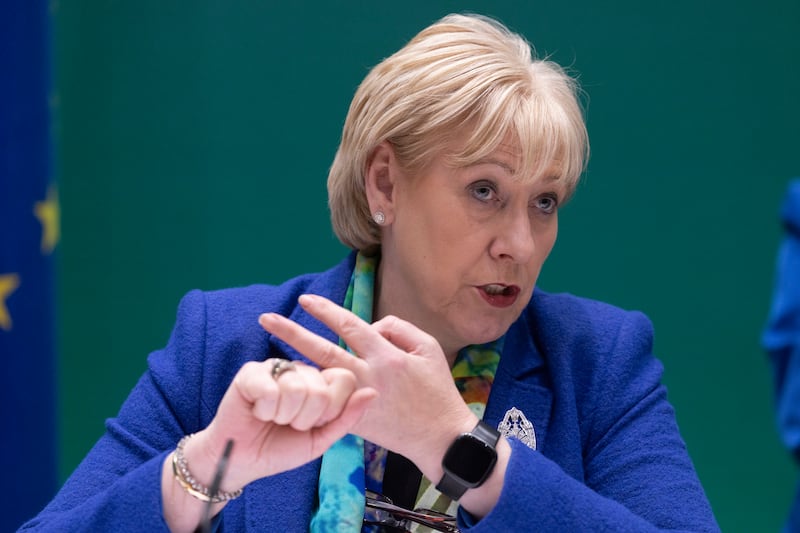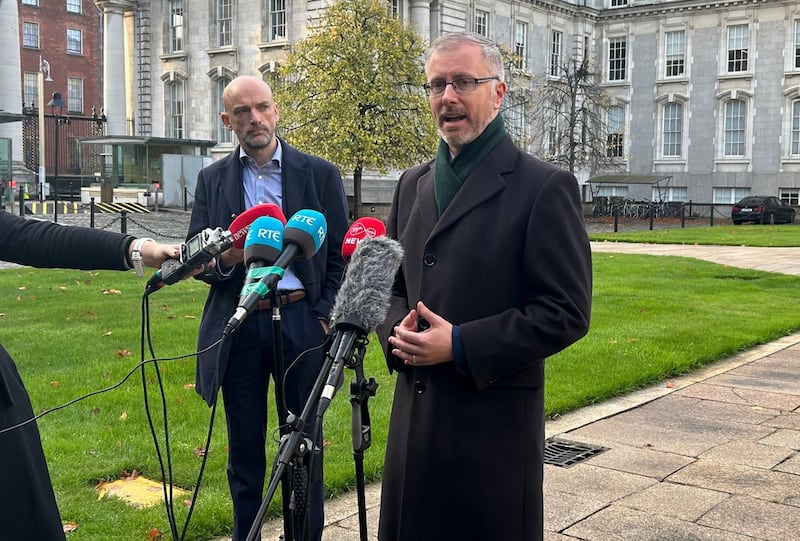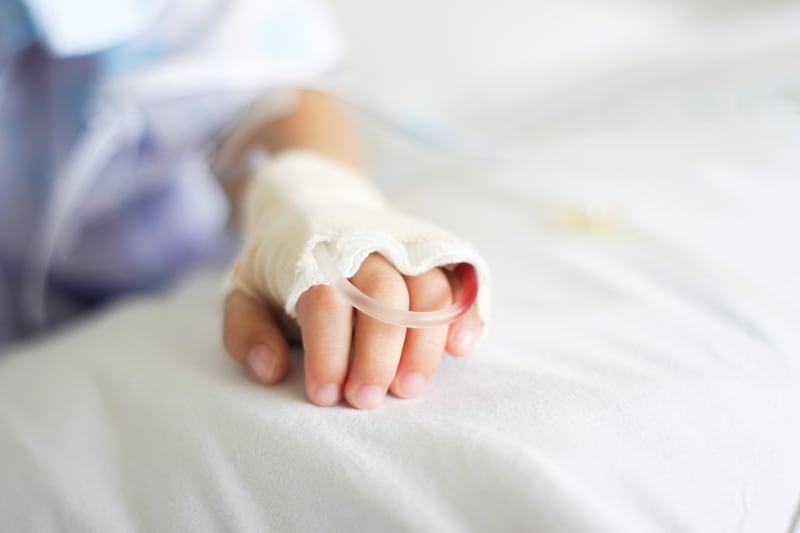In the depths of the budget-making process ahead of budget day last Tuesday, one senior Coalition figure complained about ministerial kite-flying as Cabinet members filed in to seek more and more money.
But even then, it was clear there was a scope to do more.
“It will go over,” said the insider, referring to extra money being made available, “but mostly on the once-offs”.
And so it came to pass.
RM Block
In the last week or so of budget negotiations, the cost-of-living package grew by hundreds of millions of euro, coming in at a €2.2 billion – out of a total budget package of €10.5 billion – as political leaders approved more and more spending, according to multiple sources involved in the process.
These decisions were harshly critiqued by the State’s fiscal watchdog and taken despite concerns raised by Fine Gael Minister for Public Expenditure Paschal Donohoe and Fianna Fáil Minister for Finance Jack Chambers.
But the larger sums of money were allocated against a backdrop of a deteriorating rapport between the Coalition parties as the clock ticks down to the general election.
[ Chambers and Donohoe raised concerns privately about Budget package in days before announcement ]
***
The refreshments in the Sycamore Room in Government Buildings are modest: tea, coffee, and the kinds of biscuits you might find in a B&B – custard creams, ginger nuts and Snack bars (the yellow and purple varieties).

The selection is in stark contrast to the hundreds of millions of euro at the centre of decisions thrashed out at the large Sycamore table, which gives the room its name. The room was the setting for meetings with Chambers and Donohoe and the three Government party leaders and their top aides last Thursday, Sunday and Monday.
The first major decision which drove the cost-of-living package up was on energy credits. These payouts for every home in the country have been the single biggest example of the enormous mobilisation of State resources after prices began to surge in 2022.
Since then, the Government had delivered a €10 billion payload of once-off measures before this budget, some €2.5 billion coming as energy credits.
[ Childcare industry says level of support in budget like a ‘kick in the stomach’Opens in new window ]
The initial view within the Coalition was these would not be repeated but, with winter heating bills set to rise, they became inevitable. The charge was led by Fianna Fáil whose internal polling mirrored Irish Times polls showing concern about living costs surging as longer nights draw in.
Initially, a single payment of €150 was likely, which would have cost about €300 million. However, that crept up.
By the time leaders met last Thursday, the proposal was for €250 in energy credits, adding about €200 million on to a spending package originally conceived to be €1.2 billion – and until recently remained at that level – but was heading above €1.5 billion.
***
In every budget, the last thing to be tied down is the enormous allocation for social welfare. That is determined by what is left over and a final round of wrangling between Coalition leaders, the two spending Ministers and the Fine Gael Minister for Social Protection, Heather Humphreys.

The leaders, Chambers and Donohoe met on Sunday evening at about 6pm, after watching the RTÉ Six-One news. The bulletins carried comments from Harris that it was vital the budget recognised cost-of-living pressures, priming the discussion to follow.
At 7pm, the Ministers were joined by Humphreys, who had been pushing a plan to split increases in social welfare payments, with less money for jobseekers.
That had led to ill will; senior Fianna Fáil figures believed it was never a serious proposal but one designed for public consumption and Fine Gael was firm that it was on the table.
This had been the source of friction in recent weeks. Martin privately complained to Harris that Fine Gael had been trying to hog the credit for the budget, sources say. His private concerns were much sharper than the coded public messages he had been sending, a source of annoyance to Harris.
Martin had also raised leaks during leaders’ talks on the budget, pointing out that he was reading about proposed measures for the first time in the newspapers.
[ Budget 2025 will only increase rich-poor gap, Social Justice Ireland saysOpens in new window ]
In the end, Humphreys suggested a €12 increase in pensions and other welfare payments and €10 on jobseeker’s allowance. She included measures that couldn’t be funded under the present plan – a text box jovially dubbed by Ministers, including Donohoe, as the “Paschal says No” box.
Insiders believe Humphreys cannily presented options as unfunded which she knew enjoyed huge support from the Coalition leaders, including the Taoiseach, such as increases in payments for underprivileged children. Following talks with Donohoe, the social welfare package included a €12 rise across the board in weekly payments.
Settling the welfare budget reopened the cost of living. The idea of two double payments of child benefit came into focus for most participants, even though it had been out there publicly. The Taoiseach supported the idea.
The “Double Double”, as it has been dubbed, would add about €185 million to the package. Chambers and Donohoe expressed concern about its overall size; Donohoe argued that inflation was so much lower that the package did not have to be close to the same size as in Budget 2024, a figure it was rapidly heading towards.
The meeting ended with no resolution, but, by now, word of the Double Double had begun to circulate more widely.
***
The meeting reconvened on Monday. By then, while yet to be agreed, the news about the Double Double was everywhere. The Tánaiste and Taoiseach believed it would now be impossible to walk back from the measure; it was rationalised as needed by families – and affordable. Focus shifted to the Green’s proposal for a “baby boost”, a quadruple payment of child benefit in the first month after a newborn’s arrival.
The view was both couldn’t be done, but Roderic O’Gorman, the Green Party leader, dug in, “essentially demanding” the “baby boost” go ahead, in the words of a person present. O’Gorman appeared lukewarm on the Double Double, but had not objected.

The Greens had already gone to the wall objecting to a mooted delay on land-hoarding tax, meaning scope to expend political capital blocking something else was limited.
O’Gorman argued that he had offered to scale the baby boost back to a triple payment, plus it wasn’t a cost-of-living measure; it should not be sacrificed for an expensive once-off measure. There is a long-standing view in the Greens that it hasn’t received credit for the reductions in childcare costs, and this was something they wanted branded as theirs heading towards an election.
Against that, Donohoe and Chambers were concerned that it was not targeted. Three sources recall Donohoe at one stage offering the view that elements of the cost-of-living package were reminiscent of boom-time measures.
A renewed business package was now also on the table for €167 million, partially to soften the blow of the decision not to renew the 9 per cent VAT rate for hospitality, something which Chambers and Donohoe had said early on was a non-starter – and a highly contentious issue for the industry.
Between the Double Double, the business grants and higher energy credits, there was now almost €600 million in extra spending on the table.
Add in tax breaks for renters costing €130 million and some other measures, and the total cost-of-living package was to reach €2.2 billion – hundreds of millions of euro more than had been the case until recently.
In the end, the path forward narrowed despite the concerns of Chambers and Donohoe, both of whom signed off on the package and defended it publicly. It is easier, especially in an election cycle, to do these things than not.
Whether it is wise – and whether the heady “once-off spending” can be disentangled from future budgets – is another question.
- Sign up for push alerts and have the best news, analysis and comment delivered directly to your phone
- Join The Irish Times on WhatsApp and stay up to date
- Listen to our Inside Politics podcast for the best political chat and analysis






















